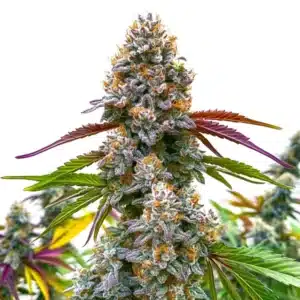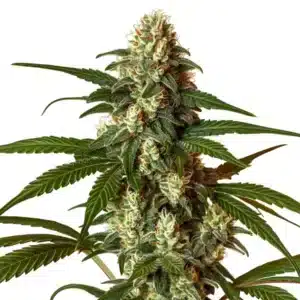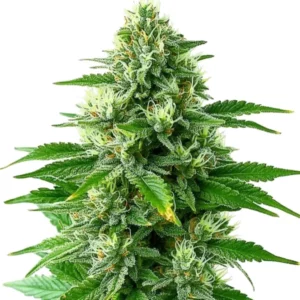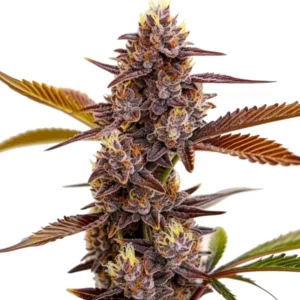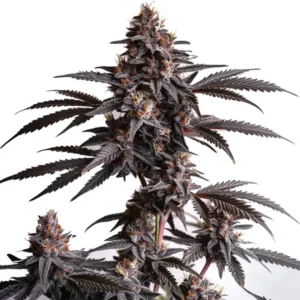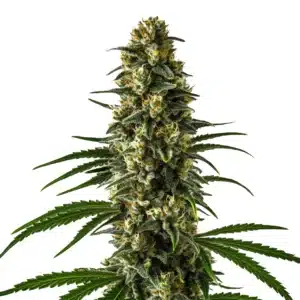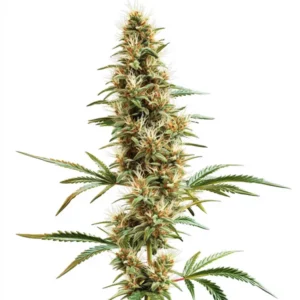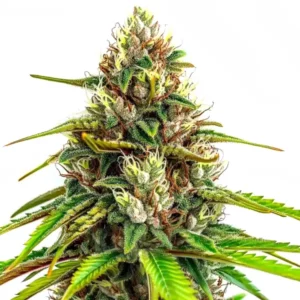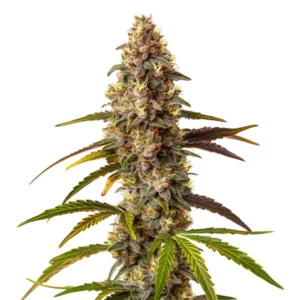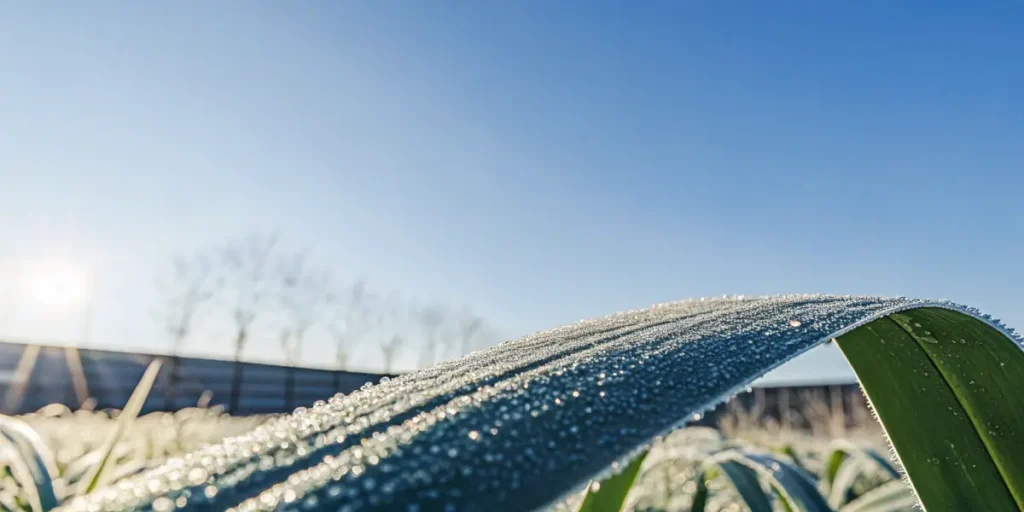
Reactive oxygen species in cannabis: role of potassium in maintaining leaf turgor
Potassium plays a crucial part in maintaining leaf turgor, which is essential for the health of your cannabis plants. Leaf turgor refers to the pressure of the cell contents against the cell wall, keeping leaves firm and upright. Without sufficient potassium, plants struggle to maintain this pressure, leading to wilting and poor growth.
Potassium influences leaf turgor pressure by regulating the movement of water and nutrients within plant cells. This mineral acts like a gatekeeper, controlling how much water each cell can hold. When potassium levels are adequate, water flows optimally, ensuring that leaves remain plump and robust. Conversely, when potassium is lacking, plants can’t retain water effectively, leading to drooping leaves.
Recommended Strains
Critical Daddy Purple
|
|
THC | 19% (Medium) |
|
|
Type | Feminized |
|
|
Yield | High |
|
|
Phenotype | 50% Indica / 50% Sativa |
Gelato
|
|
THC | 27% (High) |
|
|
Type | Feminized |
|
|
Yield | High |
|
|
Phenotype | 50% Indica / 50% Sativa |
Considering the importance of potassium in leaf turgidity, you should pay close attention to your cannabis plants’ nutritional needs. Regularly check for signs of potassium deficiency, such as yellowing edges on older leaves or weak stems. Addressing these issues early can prevent long-term damage and ensure healthy growth.
How Potassium Affects Plant Cell Hydration
Potassium affects plant cell hydration by regulating the opening and closing of stomata, the small pores on leaf surfaces. These pores control water loss and gas exchange, crucial for photosynthesis. Proper stomatal function ensures that plants can absorb carbon dioxide while minimizing water loss, a delicate balance achieved through adequate potassium levels.
When potassium levels are optimal, stomata open and close efficiently, ensuring proper hydration. This process helps maintain leaf turgor, allowing cannabis leaves to stay firm and healthy. On the other hand, insufficient potassium can cause stomata to malfunction, leading to excessive water loss and reduced leaf turgor pressure.
The function of potassium in maintaining leaf turgor is intrinsically linked to its impact on plant cell hydration. By influencing water retention and movement, potassium ensures that cells remain turgid and function optimally. This influence is critical during periods of high transpiration, where the demand for water regulation is at its peak.
Moreover, the potassium influence on leaf turgor pressure extends beyond hydration. It also affects nutrient absorption, as turgid cells are more efficient at taking up essential minerals. This dual role underscores the necessity of monitoring potassium levels to optimize both hydration and nutrient uptake, supporting overall plant health.
Practical Tips for Maintaining Potassium Levels
Regular soil testing can help you monitor potassium levels, ensuring your cannabis plants receive the nutrients they need. Use a balanced fertilizer containing potassium, especially during critical growth stages. Adjust your feeding schedule based on the results of your tests to maintain optimal nutrient levels.
For those growing strains like Critical Daddy Purple, known for its dense foliage, maintaining proper potassium levels is vital. This strain thrives when given adequate potassium, supporting its lush, vibrant leaves. Regularly inspect your plants for signs of deficiency and adjust your nutrient regimen accordingly.
Incorporating organic matter such as compost or well-rotted manure is another effective strategy for maintaining potassium levels. These natural amendments boost the role of potassium in plant water retention, enhancing soil structure and giving plants a steady supply of nutrients. This practice not only fortifies the soil but also promotes robust plant growth.
Additionally, ensure your irrigation practices support potassium uptake. Overwatering can lead to nutrient leaching, while underwatering stresses the plants, both affecting potassium availability. Striking a balance in watering will help maintain the potassium levels necessary for optimal leaf turgor and overall plant vitality.
Promos & Deals
Potassium Deficiency Impact on Leaf Turgor
Potassium deficiency directly impacts leaf turgor, leading to visible signs of plant stress. Leaves may become floppy and discolored, displaying yellow or brown edges. This condition weakens the plant, making it more susceptible to diseases and pests.
Addressing potassium deficiency is crucial for strains such as Gelato, which require precise nutrient management for optimal growth. Correcting a deficiency involves adjusting your nutrient mix to include more potassium, either through commercial fertilizers or natural amendments.
Recognizing the symptoms of potassium deficiency early is vital for preventing severe damage to your plants. Besides to leaf discoloration and weak stems, affected plants may also exhibit stunted growth and reduced yield. These signs highlight the importance of maintaining adequate potassium levels for healthy plant development.
Moreover, the potassium deficiency impact on leaf turgor extends to plant resilience. Plants with compromised turgor are less able to withstand environmental stresses such as drought or temperature fluctuations. Ensuring sufficient potassium supply can help fortify plants against such challenges, supporting sustained growth and productivity.
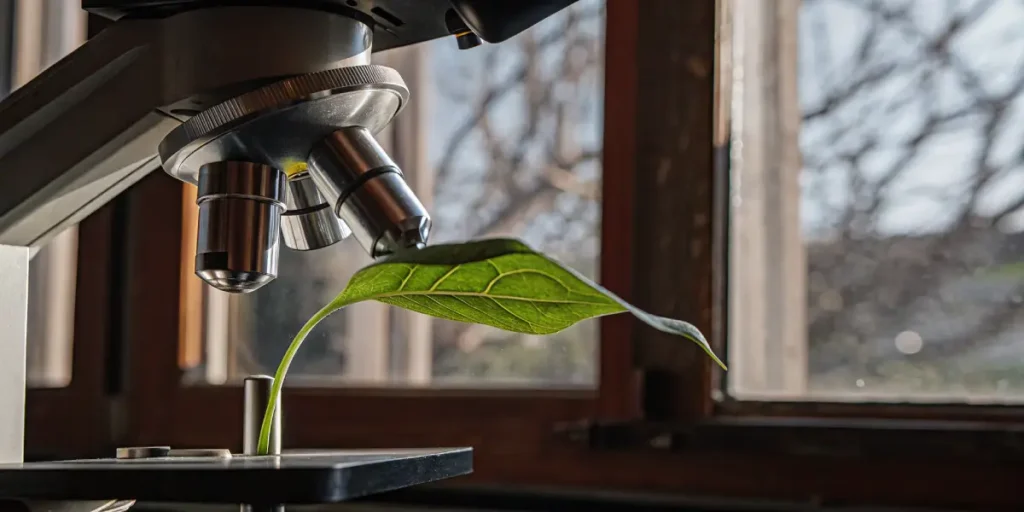
Signs of Potassium Deficiency
Recognizing potassium deficiency early can prevent long-term damage to your plants. Watch for symptoms like leaf curling, discoloration, and reduced growth rates. These signs indicate that your plants are struggling to maintain proper leaf turgor due to inadequate potassium.
- Yellowing leaf edges.
- Weak stems.
- Reduced growth.
If you notice these symptoms, take immediate action to correct the imbalance. Testing your soil or growing medium can help identify the specific nutrient deficiencies affecting your plants.
Another key indicator of potassium deficiency is the appearance of necrotic spots on leaves. These dead tissue areas are often accompanied by an overall weakening of the plant’s structure. Addressing these signs swiftly is crucial to restoring the role of potassium in maintaining leaf turgor and overall plant health.
In severe cases, potassium deficiency can also cause root dysfunction, impairing the plant’s ability to absorb water and nutrients. This exacerbates the issue, making timely intervention essential to prevent further decline in plant vitality and yield potential.
Importance of Potassium in Leaf Turgidity
Potassium is essential for maintaining leaf turgidity, ensuring that your cannabis plants can thrive. This mineral’s importance in plant water retention means it helps leaves stay firm and upright, crucial for capturing sunlight and photosynthesis.
Strains such as Banana Kush benefit greatly from proper potassium management. This strain’s large, broad leaves require adequate turgor to maximize light absorption and growth potential. Ensuring that your plants receive enough potassium will lead to healthier, more productive crops.
The importance of potassium in leaf turgidity cannot be overstated, as it directly influences the plant’s ability to perform photosynthesis efficiently. By maintaining firm leaves, potassium facilitates optimal light capture, ensuring that energy production is maximized for growth and development.
Furthermore, the role of potassium in plant water retention supports cellular functions critical to plant metabolism. This involves enzymatic activities that drive growth processes, highlighting the multifunctional benefits of maintaining adequate potassium levels for robust and resilient plant health.
Balancing Potassium in Your Grow
To maintain the role of potassium in maintaining leaf turgor, balance is key. Over-fertilizing can lead to nutrient burn, while under-fertilizing can cause deficiencies. Monitor your plants closely and adjust your nutrient plan as needed.
- Regular soil testing.
- Use of balanced fertilizers.
- Incorporating organic matter.
Achieving the right balance ensures that your cannabis plants can maintain optimal leaf turgor pressure. This approach will support healthier, more resilient plants capable of reaching their full potential.
Implementing a strategic fertilization program that aligns with plant growth stages is essential for balancing potassium levels. This involves adjusting nutrient inputs based on developmental needs, ensuring that potassium is available when it is most required for maintaining leaf turgor and overall plant vigor.
Moreover, knowing the potassium demands of specific cannabis strains can guide nutrient management decisions. Tailoring your approach to the unique needs of each strain will help optimize their growth conditions, enhancing their productivity and vitality through precise potassium management.
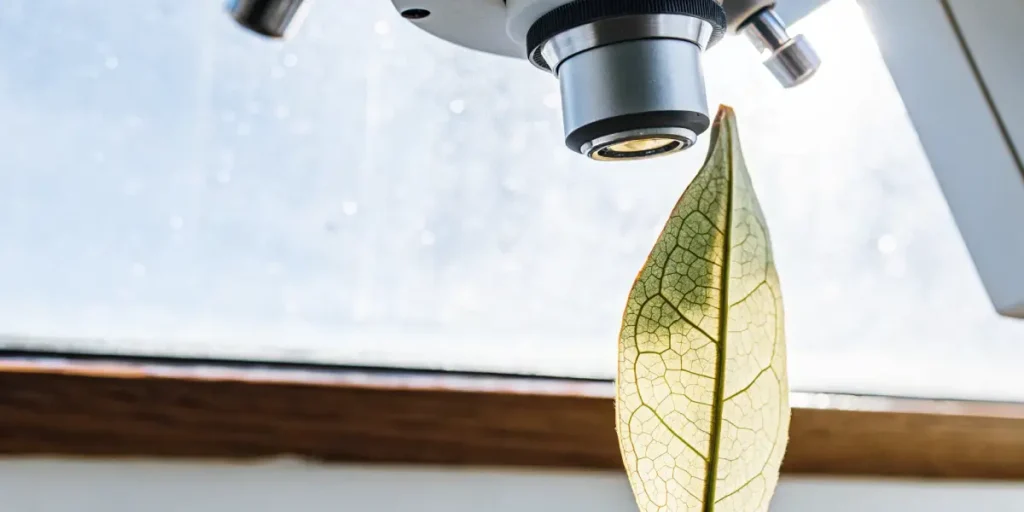
FAQs
How does potassium influence leaf turgor pressure?
Potassium influences leaf turgor pressure by regulating water movement within plant cells. It controls the opening and closing of stomata, allowing the plant to manage water loss efficiently. When potassium levels are optimal, leaf turgor remains strong, keeping leaves firm and healthy.
Conversely, a lack of potassium can lead to poor stomatal function, causing plants to lose water rapidly. This loss results in decreased turgor pressure, making leaves appear limp and unhealthy. Maintaining proper potassium levels is crucial for preventing these issues.
The potassium influence on leaf turgor pressure is a vital aspect of plant health, as it impacts not only water regulation but also nutrient uptake. By facilitating efficient stomatal operation, potassium ensures that plants can assimilate carbon dioxide effectively, supporting robust photosynthetic activity.
Additionally, the role of potassium in maintaining leaf turgor serves as a protective mechanism against environmental stressors. By sustaining adequate turgor pressure, plants are better equipped to withstand challenges such as heat and drought, emphasizing the need for consistent potassium management.
What are the signs of potassium deficiency in cannabis plants?
Potassium deficiency in cannabis plants often manifests as yellowing or browning of leaf edges, weak stems, and reduced growth rates. These symptoms indicate that the plant is struggling to maintain proper leaf turgor due to insufficient potassium.
Addressing these signs early can prevent further damage to your plants. By adjusting your nutrient mix to include more potassium, you can help your plants recover and maintain their health.
Besides to visible symptoms, potassium deficiency may also affect the plant’s reproductive capabilities, leading to reduced flower production and compromised yield quality. These impacts further underscore the importance of maintaining sufficient potassium levels for optimal plant performance.
Furthermore, prolonged potassium deficiency can weaken the plant’s immune response, making it more susceptible to pest and disease attacks. This vulnerability highlights the critical role of potassium in maintaining overall plant resilience and productivity.
Can I use organic methods to increase potassium levels?
Yes, organic methods can be effective in increasing potassium levels in your grow. Using compost or well-rotted manure can naturally boost potassium, improving soil structure and water retention.
These organic amendments not only provide necessary nutrients but also enhance the overall health of your soil, supporting better plant growth.
Incorporating organic matter into your growing medium also promotes microbial activity, which aids in nutrient cycling and availability. This symbiotic relationship between soil organisms and plant roots enhances the role of potassium in maintaining leaf turgor and plant vitality.
Furthermore, the use of organic fertilizers, such as seaweed extracts or wood ash, can complement your nutrient management strategy. These supplements offer additional sources of potassium while contributing to a sustainable and eco-friendly growing environment.
Why is potassium crucial for cannabis strains like Gelato?
Potassium is crucial for cannabis strains like Gelato due to its dense foliage and high nutrient needs. Adequate potassium ensures that these plants maintain proper leaf turgor, essential for maximizing light absorption and growth.
By managing potassium levels effectively, you can support robust growth and a healthy yield, making it an essential element in your nutrient regimen.
The importance of potassium in leaf turgidity for Gelato and similar strains lies in its ability to enhance the plant’s photosynthetic efficiency. By ensuring that leaves remain turgid, potassium maximizes light capture, supporting vigorous growth and flower development.
Moreover, the role of potassium in plant water retention is particularly significant for strains with high metabolic rates. Maintaining adequate potassium levels helps these plants cope with the demands of rapid growth, ensuring that they remain healthy and productive throughout their lifecycle.
How often should I test for potassium levels in my grow?
Regular testing for potassium levels is recommended to ensure your plants receive the nutrients they need. Depending on your growing conditions, consider testing every few weeks, especially during critical growth stages.
This proactive approach allows you to address any deficiencies early, preventing stress and promoting optimal growth for your cannabis plants.
Frequent monitoring of potassium levels is especially important during periods of environmental stress, such as heat waves or drought conditions. These scenarios can alter nutrient availability, making it crucial to adjust your fertilization strategy accordingly to maintain the role of potassium in maintaining leaf turgor.
Additionally, keeping detailed records of your test results can help you identify trends and make informed decisions about nutrient management. This data-driven approach supports a more efficient and effective cultivation process, ensuring that your plants thrive under optimal conditions.


